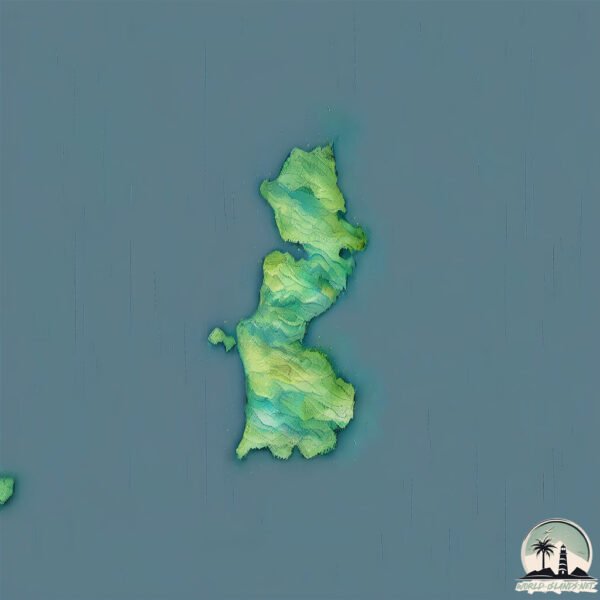Welcome to Baccalieu Island , a Continental island in the Labrador Sea, part of the majestic Atlantic Ocean. This guide offers a comprehensive overview of what makes Baccalieu Island unique – from its geography and climate to its population, infrastructure, and beyond. Dive into the details:
Geography and size of Baccalieu Island
Size: 5.196 km²Coastline: 16.6 kmOcean: Atlantic OceanSea: Labrador SeaContinent: North America
Baccalieu Island is a Small Island spanning 5.2 km² with a coastline of 16.6 km.
Archipel: –
Tectonic Plate: North America – Covers North America and parts of the Atlantic and Arctic Oceans, characterized by diverse geological features and varying levels of seismic activity.
The geographic heart of the island is pinpointed at these coordinates:
Climate and weather of Baccalieu Island
Climate Zone: ContinentalClimate Details: Warm-Summer Humid Continental ClimateTemperature: Warm Summer
Climate Characteristics: Features warm summers and cold winters with consistent precipitation, common in higher latitudes.
Topography and nature of Baccalieu Island
Timezone: UTC-03:30Timezone places: America/St_JohnsMax. Elevation: 96 m Mean Elevation: 61 mVegetation: Mixed ForestTree Coverage: 96%
The mean elevation is 61 m. The highest elevation on the island reaches approximately 96 meters above sea level. The island is characterized by Plains: Flat, low-lying lands characterized by a maximum elevation of up to 200 meters. On islands, plains are typically coastal lowlands or central flat areas.
Dominating Vegetation: Mixed Forest
Vegetation: 5 vegetation zones – Highly Diverse Island
Infrastructure and Travelling to Baccalieu Island
Does the island have a public airport? no .
Does the island have a major port? no .
The mean population of Baccalieu Island is 4 per km². Baccalieu Island is Gently Populated. The island belongs to Canada .
Continuing your journey, Random Island is the next notable island, situated merely km away.
Discovering Newfoundland - Baccalieu View Walking Trail Red Head Cove Newfoundland
Baccalieu View Walking Trail offers stunning coastal views, try your hand at fishing in the pond, enjoy the sounds of nature, and ...
Discovering Newfoundland - Baccalieu View Walking Trail Red Head Cove Newfoundland
Baccalieu View Walking Trail offers stunning coastal views, try your ...
Baccalieu View Walking Trail offers stunning coastal views, try your hand at fishing in the pond, enjoy the sounds of nature, and ...
House Location Baccalieu Island
Ned Walsh's Cove Baccalieu Island
Canada is classified as Developed region: G7: Group of Seven – Major advanced economies, including Canada, France, Germany, Italy, Japan, the United Kingdom, and the United States. The level of income is High income: OECD.
News – Latest Updates and Headlines from Baccalieu Island
Stay informed with the most recent news and important headlines from Baccalieu Island. Here’s a roundup of the latest developments.
Loading...
Please note: The data used here has been primarily extracted from satellite readings. Deviations from exact values may occur, particularly regarding the height of elevations and population density. Land area and coastline measurements refer to average values at mean high tide.

